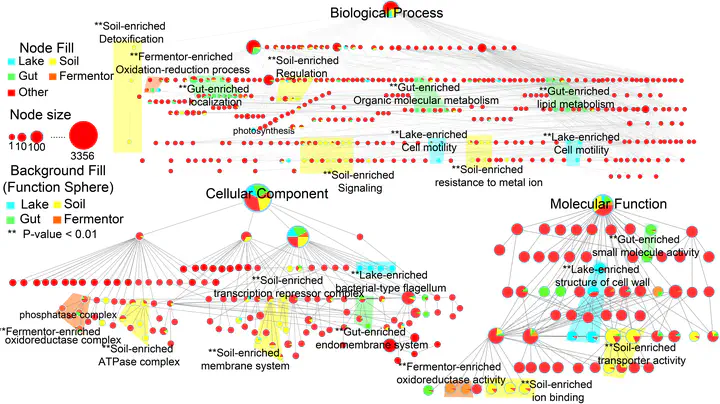Microbiome-based enrichment pattern mining has enabled a deeper understanding of the biome–species–function relationship
 featured.jpg
featured.jpgAbstract
Microbes live in diverse habitats (i.e. biomes), yet their species and genes were biome-specific, forming enrichment patterns. These enrichment patterns have mirrored the biome–species–function relationship, which is shaped by ecological and evolutionary principles. However, a grand picture of these enrichment patterns, as well as the roles of external and internal factors in driving these enrichment patterns, remain largely unexamined.
In this work, we have examined the enrichment patterns based on 1,705 microbiome samples from four representative biomes (Engineered, Gut, Freshwater, and Soil). Moreover, an “enrichment sphere” model was constructed to elucidate the regulatory principles behind these patterns. The driving factors for this model were revealed based on two case studies: (1) The copper-resistance genes were enriched in Soil biomes, owing to the copper contamination and horizontal gene transfer. (2) The flagellum-related genes were enriched in the Freshwater biome, due to high fluidity and vertical gene accumulation. Furthermore, this enrichment sphere model has valuable applications, such as in biome identification for metagenome samples, and in guiding 3D structure modeling of proteins. In summary, the enrichment sphere model aims towards creating a bluebook of the biome–species–function relationships and be applied in many fields.